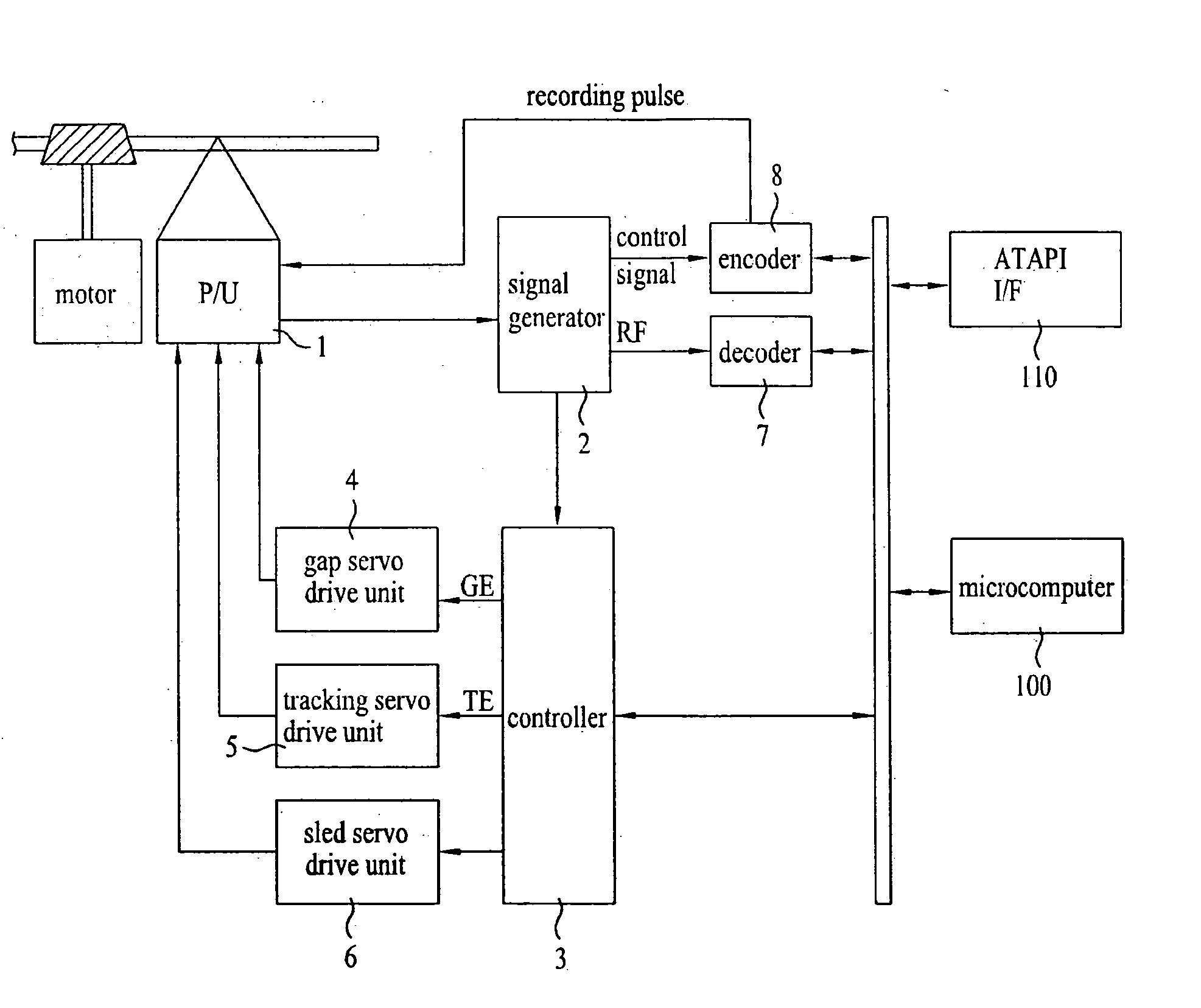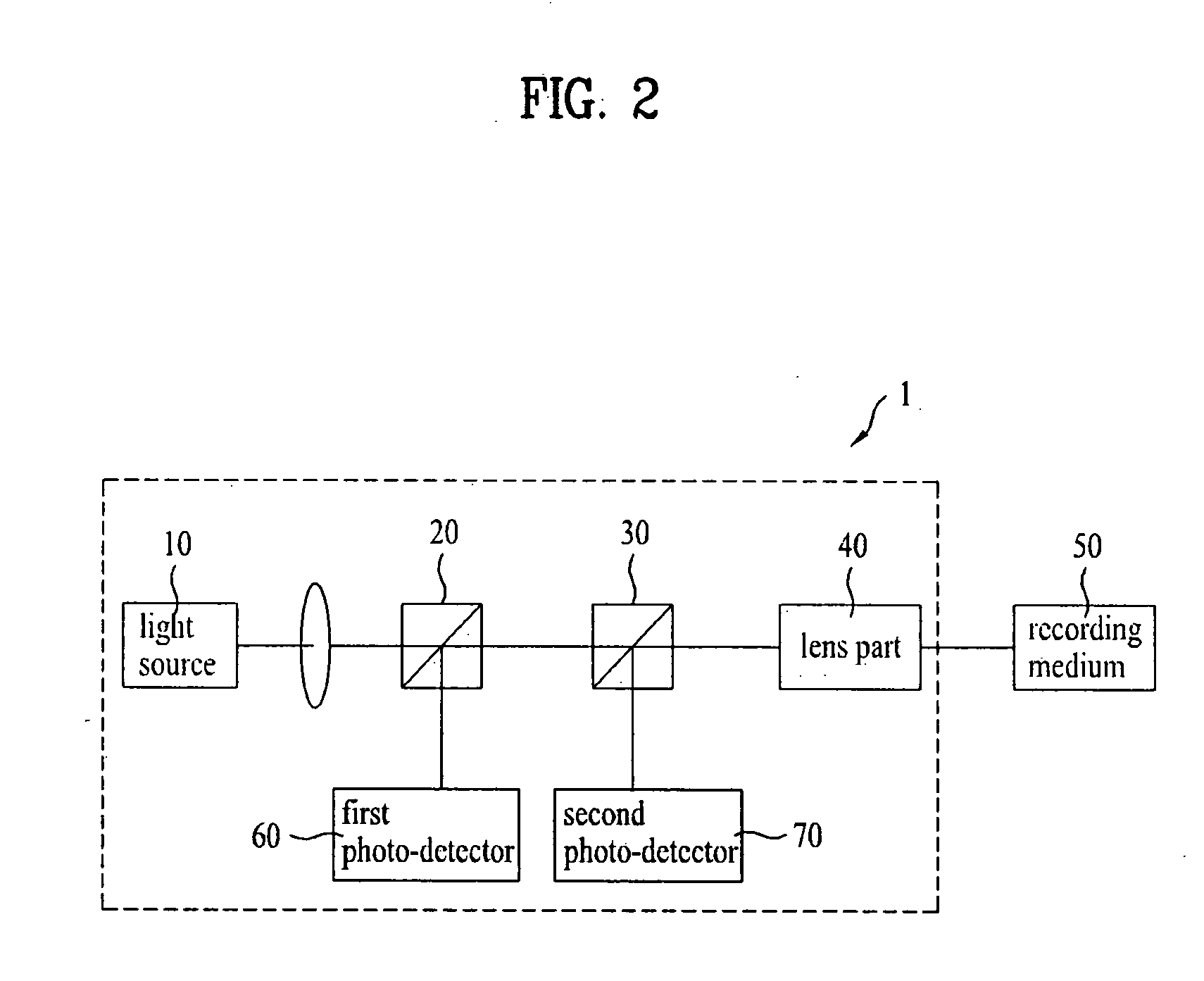Optical pickup unit, apparatus for recording/reproducing data, method for controlling the apparatus, control method, and recording medium
a pickup unit and optical technology, applied in the direction of data recording, optical recording heads, instruments, etc., can solve the problems of optical recording/reproducing devices based on the near field not being optical recording/reproducing devices having difficulty in solving, and the above-mentioned optical recording/reproducing devices based on the near field cannot be compatible with conventional recording mediums, etc., to achieve the effect of controlling tilt or vibration
- Summary
- Abstract
- Description
- Claims
- Application Information
AI Technical Summary
Benefits of technology
Problems solved by technology
Method used
Image
Examples
first embodiment
[0090] According to the near-field forming lens 42, the near-field forming lens 42 may be manufactured by cutting one end of a spherical lens, as shown in FIG. 4. If the spherical lens is cut, various-sizes of near-field forming lenses 42 having different thicknesses (d) can be acquired as shown in FIG. 4. FIGS. 4A-4C are cross-sectional views of the near-field forming lens of the recording / reproducing apparatus according to an embodiment of the present invention.
[0091]FIG. 5 is a corresponding graph illustrating a variation of a spherical aberration influenced by a variation of the thickness (d) of the near-field forming lens according to the present invention. The spherical aberration affected by the thickness of the near-field forming lens 42 is shown in FIG. 5. A spherical aberration of FIG. 4A is denoted at the point “d1”. A spherical aberration of FIG. 4B is denoted at the point “d2”. A spherical aberration of FIG. 4C is denoted at the point “d3”.
[0092] As shown in FIG. 5, if...
second embodiment
[0102] the near-field forming lens 42 will hereinafter be described in detail. A specific lens having a spherical aberration is used as the near-field forming lens 42. In this case, the objective lens 41 is designed to compensate for the spherical aberration of the above-mentioned near-field forming lens 42. A detailed description of the method for compensating for the spherical aberration will hereinafter be described with reference to the annexed drawings.
[0103] Referring to Table 1, the NA1 of the hemispherical lens shown in FIG. 4A is relatively lower than the NA2 of the super-hemispherical lens. As described above, the NA is defined as nsinθ. If a refractive index (n) or angle (θ) of the medium increases, the NA increases, and a resolution for identifying two neighboring points also increases.
[0104] On the other hand, the NA of the super-hemispherical lens shown in FIG. 4C is defined as n2 sinθ, so that the NA of the super-hemispherical lens of FIG. 4C is higher than that of t...
third embodiment
[0113] According to the near-field forming lens, a conical near-field forming lens can be manufactured as shown in FIG. 7. For example, the cut cross-section of the near-field forming lens 42 can be configured in the form of a conical structure. The part facing the objective lens 41 of FIG. 7 is hemispherically shaped in the same manner as in the above-mentioned embodiment, but the other part facing the recording medium 50 is conically shaped. A physical tilt limitation angle α increases because the area of the part contacting the recording medium 50 is minimized, and at the same time a minimum area for illuminating the optical signal on the recording medium is implemented. A detailed description thereof will be described later.
[0114] The optical system of the optical pickup unit 1 including the lens unit 40 is very close to the recording medium 50. In more detail, if an interval between the lens unit 40 and the recording medium 50 is shorter than about ¼ (or less) of the optical wa...
PUM
 Login to View More
Login to View More Abstract
Description
Claims
Application Information
 Login to View More
Login to View More - R&D
- Intellectual Property
- Life Sciences
- Materials
- Tech Scout
- Unparalleled Data Quality
- Higher Quality Content
- 60% Fewer Hallucinations
Browse by: Latest US Patents, China's latest patents, Technical Efficacy Thesaurus, Application Domain, Technology Topic, Popular Technical Reports.
© 2025 PatSnap. All rights reserved.Legal|Privacy policy|Modern Slavery Act Transparency Statement|Sitemap|About US| Contact US: help@patsnap.com



